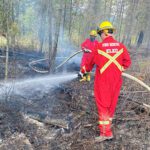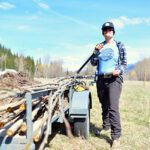Home »

B.C. asks: prepare for spring flood season
With temperatures rising throughout the province, British Columbians are urged to take steps to prepare for the possibility of flooding.
B.C.’s most severe floods usually occur in spring and early summer when melting snow and rain combine. Floods can also be caused by storm surges, ice jams or damage to structures like dikes and dams.
Here are some tips to help you and your family prepare for potential flooding:
- Protect your home: The public is advised to prepare for possible flooding of low-lying areas by moving equipment and other assets to higher ground, where possible. Clear perimeter drains, eavestroughs and gutters. Sandbags help and can be available through your local government.
- Create grab-and-go bags: Assemble an individual grab-and-go bag for each member of your household with the essentials they will need if asked to evacuate.
- Recognize the danger signs: If you live near a waterway, a change in water colour or rapid change in water level (especially a drop) could indicate a problem upstream. Call your local fire, police or public works department immediately if you suspect something out of the ordinary.
If you face a threatening flood situation, park vehicles away from streams and waterways, move electrical appliances to upper floors and anchor fuel supplies. Listen to local officials if you are asked to evacuate.
In the event of flooding, here are some tips about what to avoid:
* Steer clear of river shorelines.
* Keep away from river edges and shorelines. During periods of high flow, river banks may be unstable and more prone to sudden collapse. Stay well away and keep young children and pets away from the banks of fast-flowing streams and flooded areas or bridges.
* Do not drive through flood water.
* Never attempt to drive or walk in flood water. Just 15 centimetres (six inches) of fast-moving water can knock over an adult, and 61 centimetres (two feet) of rushing water can carry away most vehicles, including SUVs and pickup trucks.
* Landslide risk.
* Heavy rain and snowmelt may contribute to landslides and dangerous debris in creeks and waterways. Be safe and do not go down to watch the rushing water. If you notice trees beginning to lean or bend near your home, or cracks developing in the hillside, consult an engineer or contact local authorities.
British Columbians can find more details in the new Flood Preparedness Guide released by PreparedBC. The guide contains useful information that will help British Columbians better protect themselves and their homes, and understand what to do if their home or community is at risk of flooding.
View the Flood Preparedness Guide online.
For tips on how to prepare grab-and-go bags.
Emergency Management BC







